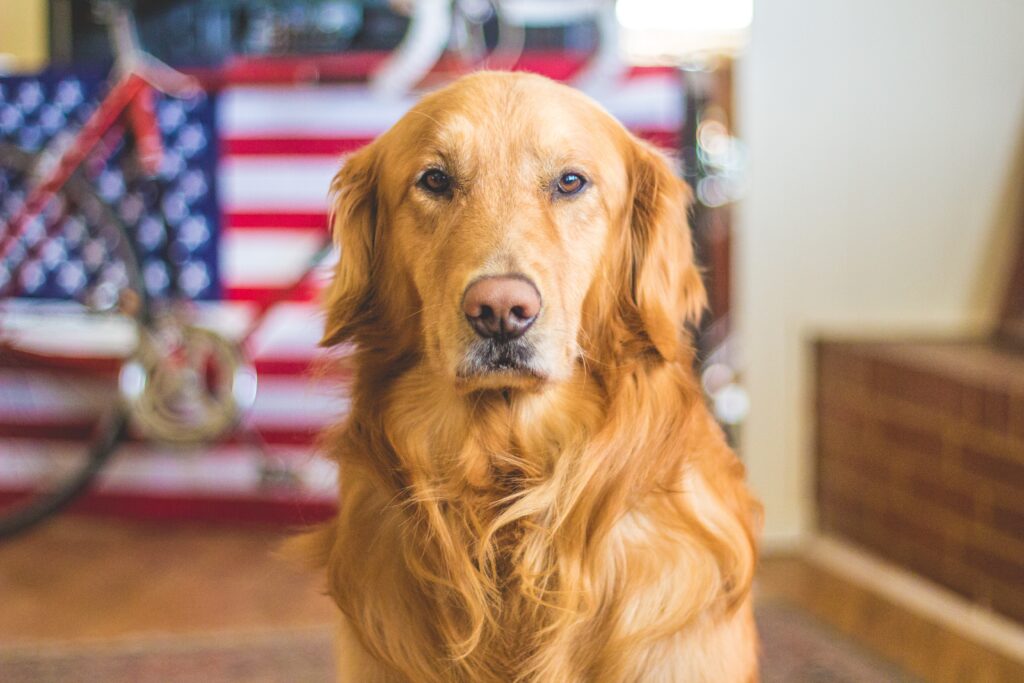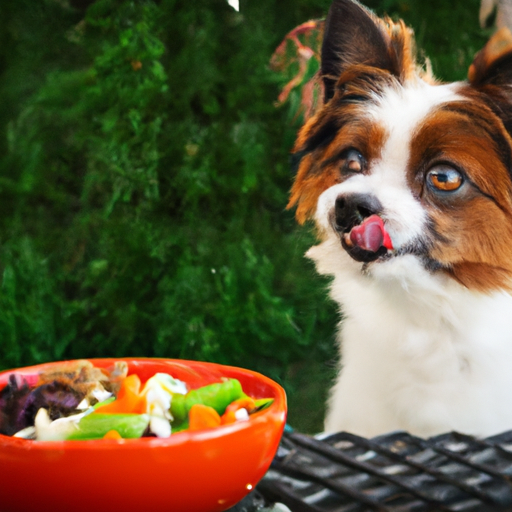Creating A Balanced Dog Diet: Nutritional Guidelines And Meal Planning
In this article, you will learn about how to create a balanced diet for your dog. Having a balanced diet is very important for dogs, just like it is for humans. You will find out what foods are good for dogs, and how much they should eat. It’s like making sure they have all the right vitamins and minerals to keep them healthy and strong. So if you want your furry friend to be happy and healthy, keep reading to learn all about creating a balanced dog diet!

This image is property of images.unsplash.com.
Section 1: Understanding Dog Nutrition
1.1 The Importance of a Balanced Diet for Dogs
A balanced diet is crucial for dogs to ensure they stay healthy and have the energy they need. Just like humans, dogs need a variety of nutrients to thrive. A balanced diet consists of proteins, carbohydrates, fats, vitamins, and minerals in the right proportions. These nutrients play a vital role in supporting your dog’s growth, development, and overall well-being.
1.2 Essential Nutrients for Dogs
Dogs require several essential nutrients to maintain their health. Proteins are necessary for muscle development and repair, while carbohydrates provide energy. Fats are important for healthy skin and a shiny coat. Vitamins and minerals support various bodily functions, including maintaining a strong immune system. Water is also critical for hydration and proper organ function.
1.3 Understanding Dog Food Labels and Ingredients
When choosing dog food, it’s important to understand the information on the labels. Look for a statement from the Association of American Feed Control Officials (AAFCO) to ensure the food is balanced and complete. Check the ingredient list for high-quality protein sources like chicken or beef. Avoid foods that contain a lot of fillers, artificial additives, or by-products.
1.4 Common Nutritional Deficiencies in Dogs
Some dogs may experience nutritional deficiencies if they are not receiving a balanced diet. A deficiency in certain nutrients can lead to issues such as poor coat quality, weakened immune system, or stunted growth. Common deficiencies include inadequate protein intake, lack of essential fatty acids, or insufficient vitamins and minerals. Regular veterinary check-ups can help identify and address any nutritional deficiencies.
1.5 Feeding Guidelines for Dogs
Feeding guidelines provide recommendations on the appropriate amount of food to give your dog based on their weight and activity level. These guidelines are usually printed on the dog food packaging. It’s important to follow these guidelines and adjust the portion size as needed to maintain your dog’s ideal weight. Be mindful of treats and table scraps, as excessive feeding can lead to weight gain and health issues.
Section 2: Designing a Balanced Dog Diet
2.1 Assessing Your Dog’s Nutritional Needs
To design a balanced diet for your dog, you need to assess their nutritional needs. Consider factors such as their age, size, activity level, and any specific health concerns. Puppies and active dogs typically require more calories compared to older or less active dogs. Consulting with a veterinarian can help you determine the right nutritional plan for your furry friend.
2.2 Consulting with a Veterinarian or Canine Nutritionist
Seeking professional guidance from a veterinarian or canine nutritionist is highly recommended when designing a balanced dog diet. They can provide expert advice tailored to your dog’s specific needs. They will consider your dog’s breed, age, weight, and any underlying health conditions to help create a personalized diet plan.
2.3 Determining the Right Portion Size for Your Dog
Portion sizes play a crucial role in maintaining your dog’s weight. It’s important to follow the feeding guidelines provided by the dog food manufacturer, and adjust the portion based on your dog’s individual needs. Obesity is a common issue in dogs, so it’s essential to be mindful of how much food your dog is consuming. Treats and table scraps should also be included in the total daily calorie intake.
2.4 Choosing the Right Dog Food
When selecting dog food, consider the quality of the ingredients. Look for a reputable brand that uses high-quality protein sources and avoids artificial additives. Dry kibble is often convenient and provides balanced nutrition. Wet or canned food can also be a good option, but it may need to be fed in smaller quantities due to its higher moisture content.
2.5 Homemade Dog Food vs. Commercial Dog Food
Homemade dog food can be an option for some pet owners, but it requires careful planning to provide all the essential nutrients. If you choose to make homemade dog food, consult with a veterinarian or canine nutritionist to ensure it meets your dog’s needs. Commercial dog food, when chosen wisely, can be a convenient and nutritionally balanced option.
2.6 Avoiding Harmful Foods for Dogs
Some human foods can be toxic to dogs and should always be avoided. These include chocolate, grapes, raisins, onions, garlic, and certain artificial sweeteners like xylitol. Additionally, fatty foods can cause digestive upset and pancreatitis in dogs. It’s crucial to educate yourself about harmful foods and ensure your dog does not have access to them.

This image is property of images.unsplash.com.
Section 3: Meal Planning for Your Dog
3.1 Establishing a Feeding Schedule
Establishing a regular feeding schedule helps provide structure and routine for your dog. Determine the number of meals your dog should have based on their age and activity level. Puppies usually require more frequent meals, while adult dogs can typically be fed twice a day. Stick to the same meal times each day to help regulate your dog’s digestion.
3.2 Incorporating Variety in Your Dog’s Diet
Offering a variety of foods in your dog’s diet can help ensure they receive a broad range of nutrients. This can include rotating between different flavors or protein sources from reputable dog food brands. However, sudden changes in diet can cause digestive upset, so make any transitions gradually over a week or so.
3.3 Balanced Meal Composition for Dogs
A balanced meal for dogs should consist of a protein source (such as chicken, beef, fish, or eggs), carbohydrates (like rice or sweet potatoes), healthy fats (such as fish oil or coconut oil), and a small amount of vegetables or fruits. The exact proportions may vary depending on your dog’s individual needs, so it’s best to consult with a veterinarian to determine the ideal balance.
3.4 Considerations for Special Dietary Needs
Some dogs may have special dietary needs due to allergies, sensitivities, or health conditions. If your dog has specific dietary requirements, work closely with a veterinarian or canine nutritionist to develop a meal plan that meets their needs. This may involve avoiding certain ingredients or incorporating specific supplements.
3.5 Introducing New Foods to Your Dog
When introducing new foods to your dog’s diet, do it gradually to avoid digestive upset. Start by offering a small amount of the new food mixed with their regular food, and gradually increase the proportion over several days. Monitor your dog for any adverse reactions, such as diarrhea or vomiting. If any issues arise, consult with a veterinarian.
3.6 Monitoring Your Dog’s Weight and Overall Health
Regularly monitor your dog’s weight and overall health to ensure they are thriving on their diet. Aim for a healthy body condition score, where your dog’s ribcage can be felt without excess fat covering, but not visibly seen. If you notice significant weight gain or loss, consult with a veterinarian to adjust their diet accordingly.

This image is property of images.unsplash.com.
Section 4: Addressing Common Dietary Concerns and Issues
4.1 Food Allergies and Sensitivities in Dogs
Food allergies and sensitivities are not uncommon in dogs. Symptoms may include skin irritations, digestive issues, or chronic ear infections. If you suspect your dog has a food allergy, a veterinarian can perform diagnostic tests or recommend an elimination diet to identify the cause. Once the allergen is identified, a specialized diet can be created to meet your dog’s needs.
4.2 Managing Weight and Obesity in Dogs
Obesity in dogs can lead to several health issues, such as joint problems and diabetes. If your dog is overweight, consult with a veterinarian to develop a weight management plan. This may involve adjusting the portion size, incorporating low-calorie treats, and increasing exercise. Regular weigh-ins and progress checks will help monitor your dog’s progress.
4.3 Dental Health and the Role of Diet
Diet plays a significant role in maintaining good dental health in dogs. Providing dry kibble or dental chews can help reduce tartar and plaque buildup on their teeth. Avoid feeding sticky or sugary treats, as they can contribute to dental problems. Regular dental check-ups with a veterinarian and teeth brushing can also help keep your dog’s mouth healthy.
4.4 Digestive Issues and Dietary Modifications
If your dog has digestive issues, such as frequent diarrhea or vomiting, their diet may need to be modified. A veterinarian can help identify the underlying cause and recommend appropriate dietary changes. This may involve a temporary bland diet, a specialized diet for sensitive stomachs, or the addition of specific supplements to support digestive health.
4.5 Senior Dog Diet Considerations
As dogs age, their nutritional needs may change. Senior dogs may require lower-calorie diets to prevent weight gain, as well as additional joint support and supplements for aging joints. Regular check-ups with a veterinarian will help ensure your senior dog’s diet is adjusted as needed to support their overall health and well-being.
4.6 Addressing Picky Eaters
Some dogs can be picky eaters, making it challenging to provide them with a balanced diet. If your dog is a picky eater, consult with a veterinarian for guidance. They may recommend trying different flavors or textures, warming the food slightly, or adding a small amount of wet food or a food topper to entice your dog to eat.

Section 5: Supplementing Your Dog’s Diet
5.1 Understanding Dog Supplements
Dog supplements are additional nutrients that can be added to your dog’s diet to provide extra support. They come in various forms, such as powders, liquids, or chews. Supplements should not replace a balanced diet but can be beneficial in certain situations or for specific health concerns.
5.2 Commonly Recommended Supplements for Dogs
Some commonly recommended supplements for dogs include fish oil (which provides omega-3 fatty acids for healthy skin and coat), glucosamine and chondroitin (for joint health), and probiotics (to support digestive health). However, it’s important to consult with a veterinarian before adding any supplements to your dog’s diet, as not all dogs may require them.
5.3 Risks and Benefits of Supplements
While supplements can offer benefits, there can also be risks if not used properly. Giving excessive amounts of certain supplements can be harmful to your dog’s health. It’s crucial to follow the recommended dosage and consult with a veterinarian to ensure the supplements are safe and appropriate for your dog’s specific needs.
5.4 Consulting with a Vet before Supplementing
Before adding any supplements to your dog’s diet, consult with a veterinarian. They will evaluate your dog’s individual needs and determine if any supplements would be beneficial. They can also recommend high-quality brands and provide guidance on the appropriate dosage.
5.5 Proper Administration of Dog Supplements
When administering supplements to your dog, follow the instructions provided by the manufacturer and your veterinarian. Some supplements may need to be given with food, while others can be administered directly. If your dog refuses to take a supplement, consult with a veterinarian for alternative options or forms of administration.

Section 6: Transitioning to a New Diet
6.1 Introduction to Diet Transitioning
When transitioning your dog to a new diet, it’s essential to do so gradually. Sudden changes in diet can cause digestive upset, leading to diarrhea or vomiting. Slowly introducing the new food allows your dog’s digestive system to adjust and reduces the likelihood of any adverse reactions.
6.2 Gradual Diet Transitioning Process for Dogs
To transition to a new diet, start by mixing a small amount of the new food with your dog’s current food. Gradually increase the proportion of the new food over several days or weeks, depending on your dog’s tolerance. Monitor your dog’s stool consistency and overall well-being throughout the transition to ensure they are adjusting well.
6.3 Monitoring Digestive Changes during Transition
During the diet transition, closely monitor your dog for any changes in their digestion. If your dog experiences severe diarrhea or vomiting, consult with a veterinarian. They can assess whether the transition is too rapid or if there may be an underlying issue that needs to be addressed.
6.4 Troubleshooting Issues during Diet Transitioning
If your dog has difficulty transitioning to a new diet, there are several troubleshooting steps you can take. These include extending the transition period, offering smaller and more frequent meals, or trying different protein sources. If the issues persist, consult with a veterinarian for further guidance and potential alternative diet options.
By following these guidelines and thoroughly understanding dog nutrition, you can ensure your furry friend receives a balanced and wholesome diet. Remember, every dog is unique, so it’s important to seek professional advice from veterinarians or canine nutritionists to tailor their diet specifically to their individual needs. With a well-crafted diet plan, your dog can enjoy optimal health and vitality throughout their life.









